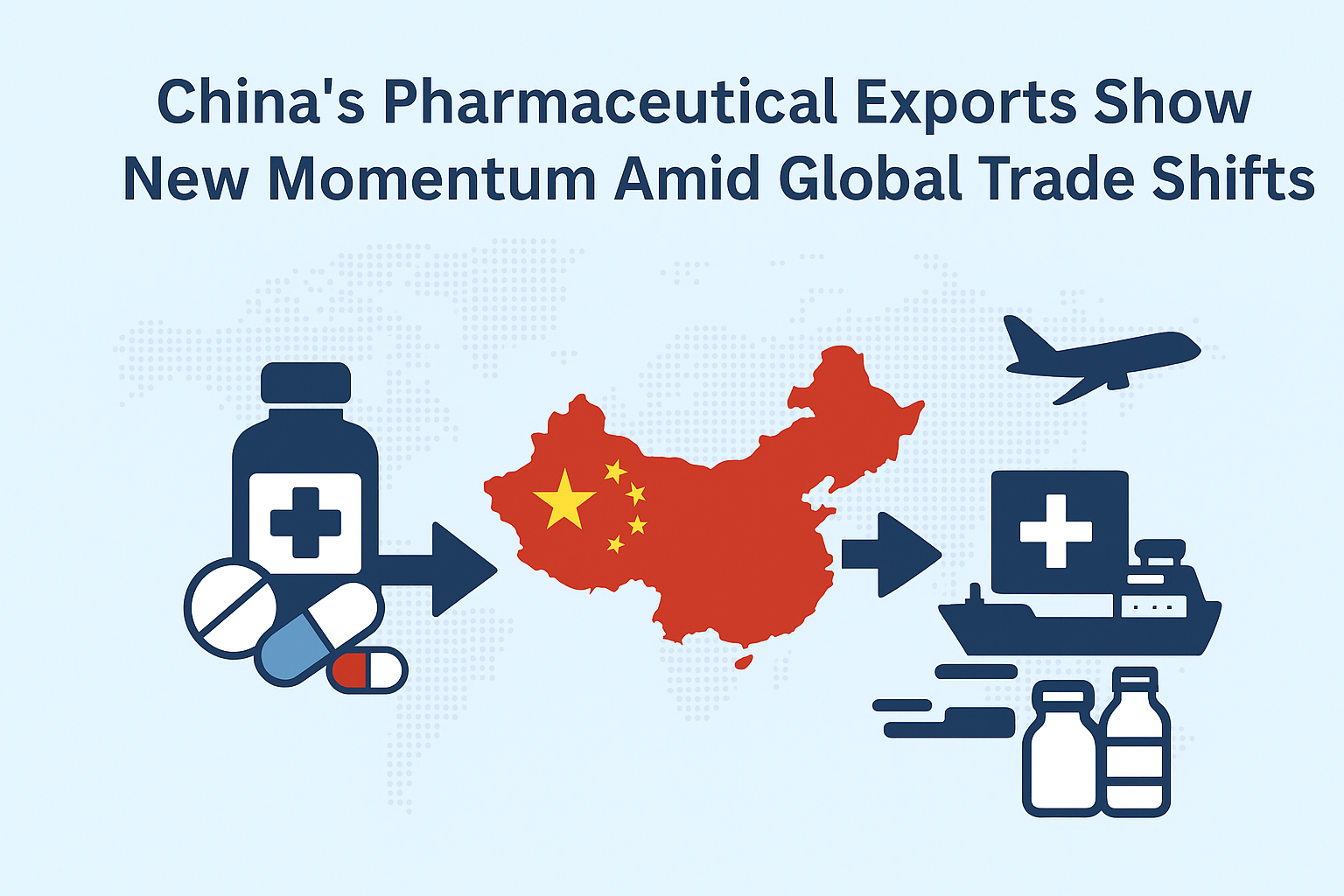China’s Pharmaceutical Exports Show New Momentum Amid Global Trade Shifts

The landscape of China’s pharmaceutical exports is entering a period of accelerated transformation, driven by changing global trade patterns, the rise of innovative drug development, and the diversification of global healthcare demand.
In the past decade, China’s pharmaceutical exports were dominated by active pharmaceutical ingredients (APIs) and intermediate chemicals. Today, however, export data and trade analysis indicate a steady move toward finished formulations, specialty drugs, and high-value clinical products. This marks a shift from quantity-driven to quality-oriented growth.
Structural Upgrade and Market Diversification
According to recent industry studies, exports of Chinese finished pharmaceutical products have grown by over 20% year-on-year, while the proportion of raw materials in total exports continues to decline.
At the same time, export destinations are becoming more diverse — Southeast Asia, the Middle East, Africa, and Latin America have emerged as major growth markets. These regions, facing both demographic expansion and healthcare access challenges, are increasingly turning to Chinese medicines for affordable and stable supply.
Trade policies such as the Regional Comprehensive Economic Partnership (RCEP) and ongoing Belt and Road cooperation have also created new frameworks for pharmaceutical collaboration, reducing tariffs and harmonizing regulatory pathways across member economies.
Compliance, Innovation, and Supply Chain Resilience
Yet the new wave of growth is not without challenges. The internationalization of Chinese medicines requires compliance with stricter regulatory standards from the U.S. FDA, EMA, and the WHO. Meanwhile, geopolitical uncertainties and supply chain restructuring push exporters to strengthen quality assurance and logistical resilience.
Hong Kong, as a long-standing trade and logistics hub, continues to play a key role in connecting Chinese pharmaceutical manufacturers with global buyers. Its transparent regulatory system, established logistics network, and access to international certification channels have attracted numerous export-oriented pharmaceutical firms.
Hong Kong as a Conduit for Chinese Medicines
Among these enterprises, DengYue Medicine, a Hong Kong-based pharmaceutical wholesaler, exemplifies how regional firms are aligning with this broader trend. The company focuses on the export of innovative drugs, oncology and hematology treatments, orphan medicines, and hospital-use pharmaceuticals, ensuring products comply with global standards of safety and efficacy.
Rather than simply acting as a trading intermediary, companies like DengYue are investing in digital tracking systems, clinical documentation, and overseas registration—steps that reflect the industry’s gradual shift toward sustainable, compliance-based internationalization.
Outlook: From Volume to Value
As global demand for diverse and affordable medicines continues to expand, China’s role in the international pharmaceutical supply chain is likely to deepen—but in a more differentiated way.
Exporters are expected to move further up the value chain, combining R&D capabilities, quality management, and international market adaptation. Hong Kong’s trade environment may continue to provide an effective springboard for these transitions.
In this evolving context, the rise of firms such as DengYue Medicine reflects a broader shift—not just in where Chinese medicines are produced, but in how they reach the world: with greater compliance, collaboration, and credibility.
- Questions and Answers
- Opinion
- Motivational and Inspiring Story
- Technology
- Live and Let live
- Focus
- Geopolitics
- Military-Arms/Equipment
- Segurança
- Economy
- Beasts of Nations
- Machine Tools-The “Mother Industry”
- Art
- Causes
- Crafts
- Dance
- Drinks
- Film/Movie
- Fitness
- Food
- Jogos
- Gardening
- Health
- Início
- Literature
- Music
- Networking
- Outro
- Party
- Religion
- Shopping
- Sports
- Theater
- Health and Wellness
- News
- Culture

